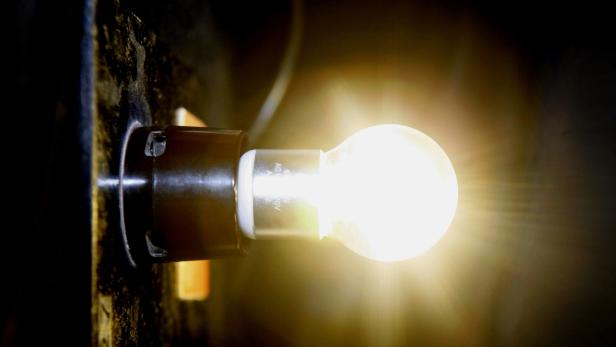
LED Bulb Test
Dieser Artikel ist älter als ein Jahr!
A technology that has developed very rapidly in recent years is light-emitting diodes (LEDs). LED lamps are around 25 to 35 percent more energy efficient than fluorescent lamps in direct comparison, and generally also last longer. And they contain no poisonous mercury. But because there are no binding minimum standards, it is often difficult to make sense of the offerings on the market.
LED bulb test
In an LED lamp test that will run until autumn and for which initial results are now being presented, LEDs in traditional bulb forms (part 1) and in spotlight form (part 2) are being tested. The tested products are in the premium segment, and have a minimum life of 25,000 hours and increased energy efficiency according to the manufacturers. "The test is aimed at determining how good and efficient lamps that are described as good really are in actual use," explained Bernd Schäppi from the Austrian Energy Agency. In addition to this top segment, three lamps that are very common on the market and that are in the lower-priced segment were also included (two from Ikea and one from Philips).
The product tests are being completed for klima:aktiv-Service topprodukte.at and are being conducted by the light laboratory at Vienna`s Municipal Department 39, by the Swedish national laboratory at the Technical Research Institute of Sweden and by the French laboratory at Paul Sabatier University.

© Gerhard Deutsch
Results
The results for the most important purchase criteria of light color (light temperature), color reproduction (color rendering index), brightness (light flux) and energy efficiency were generally positive. All tested bulbs provided warm white light between 2600 and 3100 kelvin in accordance with the manufacturer`s information. This put the tested LEDs very close to an incandescent bulb in terms of light temperature, while consumers often complain that incandescent bulbs provide very cold, pale light.
Color rendering
Individual products from Philips, Ledon and Ikea scored very highly in terms of how the test colors were rendered, but most bulbs were ranked as "good." As far as the Ikea bulbs are concerned, however, they are far behind the other tested bulbs in terms of efficiency. The tested Ikea bulbs are also only equivalent to a 35 watt incandescent bulb, and are therefore only suitable for a small number of household uses. The only product in the test that did not achieve a recommendable color rendering is the clear bulb-shaped lamp from AustroLed.
Brightness
In addition to a product from MegaMan, AustroLed also did poorly in terms of bulb brightness. The actual amount of light provided was far below that declared by the manufacturer, and the ranking was reduced accordingly. The other brand-name products that were tested provided up to 15 percent more light than indicated by the manufacturer in some cases. "This result is positive, but it is tempered by the fact that LEDs decrease substantially in brightness as they get older," Schäppi said.
Energy efficiency
In terms of energy efficiency, seven bulbs delivered between 70 and 89 lumens of light per watt. "This is significantly better than the most efficient fluorescent bulbs," Schäppi explained. The Ikea bulbs did not do very well in this category, and only came in at just over 50 lumens per watt.
Summary
The product testers found the generally good results in terms of brightness, color rendering and energy efficiency to be positive, but not surprising. "However, a final overall rating of the tested products cannot be made until autumn, when we will also have results for the durability criteria," Schäppi explained.
The main drawback of LED bulbs is their very high price. It is only worth replacing fluorescent bulbs with LED bulbs in terms of cost when they last roughly twice as long. According to the manufacturers, most of the tested lamps have a minimum life of 25,000 hours, but there are already cheaper LED bulbs that only have an indicated life of 10,000 hours. There are now also fluorescent bulbs with a lives of between 15,000 and 20,000 hours. This could make it difficult to justify purchasing LED bulbs based on life versus price.
In terms of functionality and quality, LED bulbs are better everywhere where lamps with a warm-up time or lamps that contain mercury are not acceptable, or where the lights should be dimmable.
Test results download
The detailed test results broken down according to the individual criteria of energy efficiency and color rendering can be
Tips for buying LEDs:
- Note the product information on the package and the energy label.
- Select a product with a life of at least 25,000 hours (or only buy products with a shorter life if they are correspondingly cheaper).
- Select a product with the efficiency class A+.
- Select bulbs with a color rendering of at least Ra=80 (the binding minimum for products in the EU starting in the autumn).
- Select bulbs with a color temperature between 2700 and 3200 K (warm white).
- Make sure the LEDs are equipped with visible cooling elements.
Kommentare